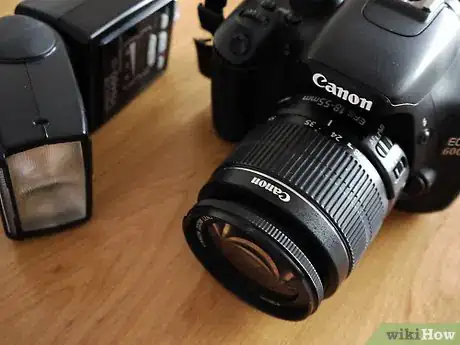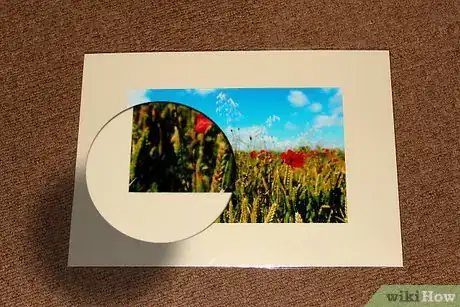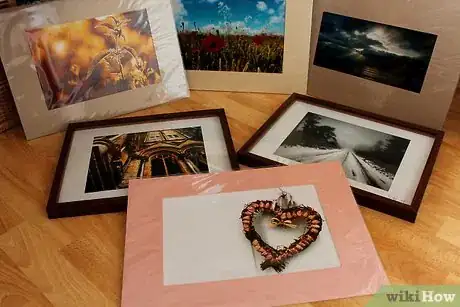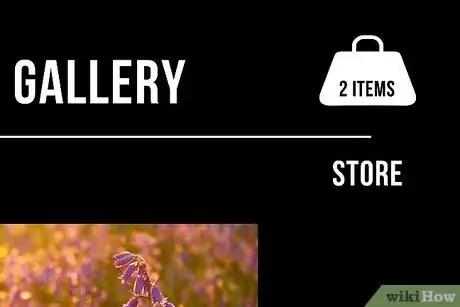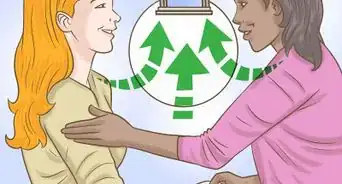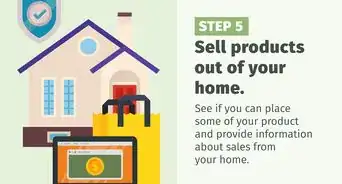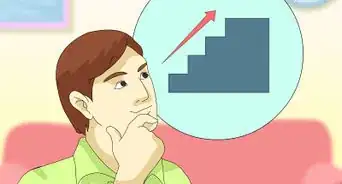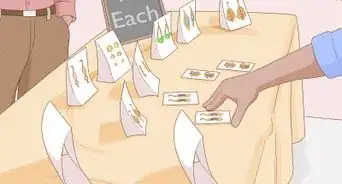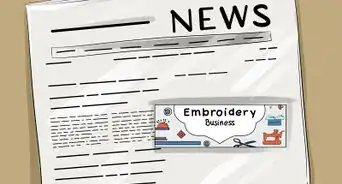wikiHow is a “wiki,” similar to Wikipedia, which means that many of our articles are co-written by multiple authors. To create this article, volunteer authors worked to edit and improve it over time.
wikiHow marks an article as reader-approved once it receives enough positive feedback. In this case, 92% of readers who voted found the article helpful, earning it our reader-approved status.
This article has been viewed 43,264 times.
Learn more...
Selling art in the 21st century requires integrating art and the online world. Most galleries have blogs and websites to showcase their artists. Auction houses have started listing auction pieces and selling online, in order to compete with eBay. Many new artists can take advantage of free resources online to market their art. If you sell or make art, then it is a good idea to post your artwork online. It can be used to reach out to current customers or establish new ones. There are many options, so choose the best online art gallery based on your budget. Read more to find out how to set up a digital art gallery.
Steps
-
1Take high-quality pictures of your artwork. If you are not a good photographer, then hire someone to take the photographs. They should be taken in good lighting with 1 or 2 detail shots of each piece.
- If you are a sculptor, this is especially important. Painters can often crop their photos, so that the image is the only thing inside the picture. Sculptors usually need a platform, a background and some white space around the edges.
-
2Keep high-resolution photographs of all of your artwork. Make sure each piece has at least 72 dots per inch (DPI), or preferably an even higher resolution. 72 dpi often allows you to email, while online galleries usually allow larger files to be uploaded.Advertisement
-
3Decide upon your marketing budget. You can choose to create your own website with a digital gallery, sign up for a digital gallery account with an artists' website or use free online galleries. Your choice should be based on your marketing budget and familiarity with computers.
- Set up a high quality website. This is a great idea for people who want to market themselves to both collectors and galleries. You must buy a domain, choose a platform that can host high-resolution digital media, your resume, a blog, your biography and more. Unless you are already a web-programmer, you should buy your domain and then hire someone to create an attractive site that will allow you to keep a digital gallery for years to come. This requires a large investment at first, but has few long-term costs.
- Join a site that already markets to the online art consumer. Good examples of this platform are Exhibit A, 20x200, art.sy, artroof.com, ArtSpan, FolioLink, ArtPickle and gallery-worldwide.com. They range in pricing. Some high end galleries require an invitation. Some places offer yearly subscriptions for a few hundred dollars, while other places offer monthly rates between $5 and $25.
- Choose to create an online gallery through a free service. This includes imagekind.com, Facebook, Artmajeur.com, Vlad Art Gallery and ShowOffArt.com. The main drawback of using a free service is that you have less control over your images and the people who view them. They can be downloaded off the site. In the case of ImageKind, you are uploading a gallery for free, but people can only buy prints of your work. Make sure to read the terms and conditions closely before signing up for any free services.
- Consider watermarking your images, if you are afraid they will be used without your permission. You can do this with Adobe Photoshop or Google Plus. This is especially a good idea if you are a photographer, because your images may show up on Google Images and be used as clip art.
-
4Select your software or website. Sign up and then read the instructions carefully. Each site requires different resolutions, so make sure you do your photo editing on your computer before you upload.
- Some subscriptions to online galleries come with gallery management software. You would install the software on your computer, and it would help you organize updates to your gallery using this software and then upload the changes when you are ready.
-
5Select your artwork carefully. Keep in mind that some works of art do not show up very well, so you may want to save them for shows or galleries. You can also include a detail shot of a piece and note that it is a "detail" of the previous work.
- List the artist, title, media, dimensions and price in the appropriate caption boxes. Your customers should be afforded each detail, in order to help them make decisions.
-
6Set up a shopping cart on your gallery website, or list how someone can get in contact with you about how to purchase a piece of art. You should have a dedicated phone line and email, if you choose the latter. Some websites and online galleries require you to have an online shopping cart.
- Test your shopping cart, if that is the way you have chosen to sell your art. Buy a piece of art and make sure you receive communication about payment and shipping.
-
7Give your current collectors the first invitation to view your online art gallery. This is a great way to move from traditional methods of selling your art to the online market while telling them that you value their business. Many digital art galleries send out email blasts via Constant Contact, Vertical Response or Volusion.
- These email blast companies allow you to upload your current customer's emails, create an email from a template and send to your list. They also offer your feedback as far as how many people opened it and how many people clicked on the link to your gallery. These companies offer 1-month trials, so you can try the product before you subscribe for a monthly fee.
-
8Market your online gallery. Once your portfolio is online, it is only the beginning of the process. You must use social media, email newsletters, blogs, studio photographs and more to make sure you are marketing your art. Many people choose to post their art online instead of being represented by a gallery, but this means the burden of promotion falls on you, rather than experienced art promoters.
- Sign up for free social media accounts, such as Tumblr and Facebook. Cross-reference these accounts with your email blasts and online site. They can help you to make announcements about art sales, new pieces, galleries and shows.
-
9Update your artwork regularly. Make sure you get into the habit of uploading new art, updating customers and consistently communicating via social media. Consistency is especially important in online marketing.
Warnings
- Beware of online scams if you sell artwork online. Make sure payment is secured before shipping any art to a potential customer. In many cases, it may take 3 days to a week for a check, PayPal payment, Google Checkout payment or other type of payment to clear.⧼thumbs_response⧽
Things You'll Need
- High-quality camera
- High-resolution images
- Marketing budget
- Website or online gallery subscription
- Image details
- Shopping cart
- Email blasts
- Social media accounts
